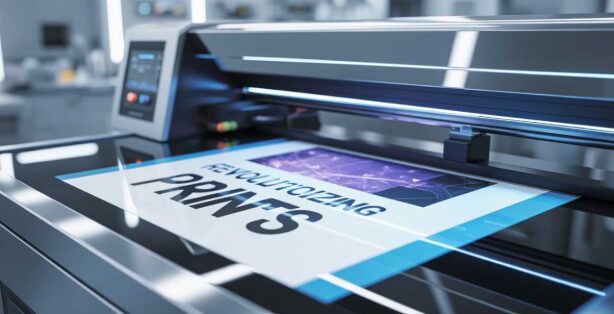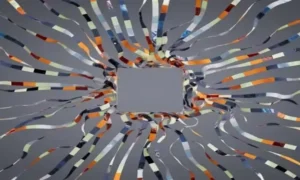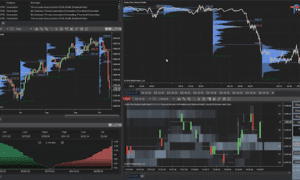I’ve been struggling for weeks to get my prints to look sharp, colorful, and long-lasting. Every time I tried a new method, it either peeled off, faded too fast, or just didn’t stick right. I thought maybe it was my printer or the film, but nothing seemed to work the way I wanted. That’s when I stumbled across UV direct to film printing, and everything changed.
In this blog, you’ll learn exactly what UV direct to film printing is, how it works, and why so many creators and businesses are switching to it. Whether you’re tired of dull results or just curious about this new method, I’ll break down the process in simple terms and show you how it can level up your print game. Let’s dive in!
What is UV Direct to Film (DTF) Printing?
UV Direct to Film (DTF) printing is a new method where UV ink is printed directly onto a special film, then transferred to different surfaces. It uses ultraviolet light to cure the ink instantly, making the print dry and ready fast. This process works on various materials like wood, metal, plastic, glass, and more. It’s popular because it gives high-quality, vibrant, and long-lasting results.
Unlike heat-based printing, UV DTF doesn’t need heat presses or pre-treatment. The film is simply peeled and stuck onto the surface, kind of like a fancy sticker. It’s fast, clean, and super detailed, making it great for custom designs. Many small businesses and creators love it for its ease and stunning finish.
How UV DTF Differs from Traditional Printing Methods
UV DTF printing is very different from traditional printing methods in how it works and what it can do. Traditional printing often needs heat, pressure, or special coatings to transfer ink onto surfaces. But UV DTF uses ultraviolet light to dry the ink instantly, without heat, making it faster and cleaner.
Also, most old methods work best on flat fabrics or paper. UV DTF, on the other hand, sticks to almost anything, wood, glass, plastic, metal, even curved surfaces. It gives sharper, more vibrant results and lasts longer, making it a great choice for custom, high-quality prints.
The Technology Behind UV DTF Printing
UV DTF printing uses advanced technology that combines UV ink, a special adhesive film, and UV light. The printer first applies UV ink onto a transparent film, then adds a layer of adhesive on top. As the ink is printed, a built-in UV light cures it instantly, no drying time needed.
Once the design is ready, you peel the film and press it onto the surface you want to decorate. The adhesive sticks firmly, and the cured UV ink stays bright, sharp, and durable. This technology allows you to print on almost any surface without heat, making it perfect for detailed and colorful custom designs.
Key Benefits of Using UV Direct to Film Printing
- Prints on almost anything: From glass and wood to plastic and metal, it works on many surfaces without needing special treatment.
- Instant drying with UV light: No waiting around! The ink cures instantly, saving time and boosting productivity.
- Sharp and vibrant results: The colors pop, the details are clear, and the print looks high-quality every time.
- No heat or pressure needed: Unlike other methods, UV DTF doesn’t require heat presses, making the process easier and safer.
- Durable and long-lasting: The prints are water-resistant, scratch-proof, and made to last, even on rough or curved surfaces.
Common Applications Across Industries
UV DTF printing is widely used in custom product businesses. From mugs and phone cases to signs and keychains, it helps add detailed, colorful designs with ease. Small shops and crafters love it for its flexibility and fast turnaround.
Big industries also use it for branding and decoration on glass, metal, and plastic items. It’s popular in packaging, home décor, and promotional merchandise. The best part? It works on both flat and curved surfaces without special prep.
Challenges and Considerations to Keep in Mind
While UV DTF printing offers many benefits, it’s not completely hassle-free. The upfront cost of UV printers and special films can be high for beginners. Also, using the wrong settings or materials may lead to poor print quality or peeling issues.
You’ll also need to keep the workspace clean and dust-free to avoid bubbles or smudges. Plus, not all surfaces are 100% compatible, so testing before large runs is smart. Learning the right techniques takes a bit of practice, but it’s worth it in the long run.
Is UV DTF Printing Right for Your Business?
UV DTF printing can be a game-changer if your business needs fast, high-quality prints on a wide range of materials. It’s perfect for custom product sellers, gift shops, and anyone creating personalized items like signs, phone cases, or branded merchandise.
However, if you’re only printing on fabric or have a tight budget, it might not be the best fit right now. Consider your goals, target market, and how much customization you offer. If versatility and stunning visuals are key, UV DTF could be exactly what you need.
FAQ’s
What is UV Direct to Film Printing?
UV Direct to Film Printing is a method that uses UV light to print vibrant designs onto special film. It sticks to many surfaces without heat or pressure.
How does UV Direct to Film Printing work?
UV Direct to Film Printing works by curing UV ink on film using ultraviolet light. The design is then transferred to a surface using strong adhesive.
What makes UV Direct to Film Printing different from other methods?
UV Direct to Film Printing doesn’t need heat or pre-treatment. It prints directly on different materials with bright colors and long-lasting results.
What surfaces can UV Direct to Film Printing be used on?
UV Direct to Film Printing works on glass, metal, plastic, wood, acrylic, and more. It’s perfect for both flat and curved surfaces without any extra prep.
Is UV Direct to Film Printing good for small businesses?
Yes, UV Direct to Film Printing is ideal for small businesses offering custom products. It’s fast, easy to use, and works on many items.
Conclusion
UV Direct to Film Printing is changing how we create custom designs on everyday items. It’s easy to use, works on many surfaces, and gives sharp, colorful, and lasting results. Whether you’re making mugs, signs, or phone cases, this method saves time and skips the mess of traditional printing.
If you want a faster, cleaner, and more flexible way to print, UV Direct to Film Printing might be the perfect solution. It’s great for both beginners and businesses looking to grow with creative, high-quality products.



































